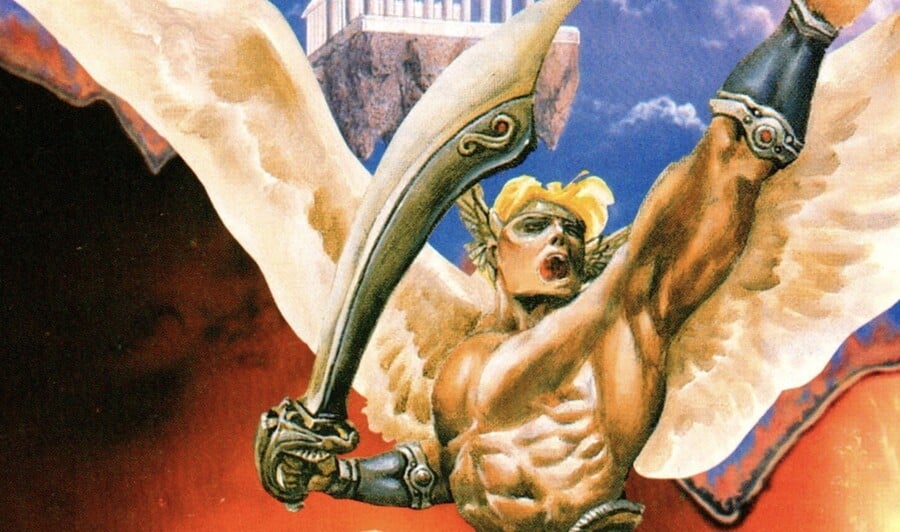
Quintet's ActRaiser was an early SNES release, but like so many games in that opening software salvo, it has gone on to be considered one of the console's finest titles.
A refreshingly unique mix of action platforming and Populous-style 'God' sim, ActRaiser offered gorgeous visuals, amazing music (thanks to Yuzo Koshiro) and incredible depth and variety – so, when the second game turned up, it was something of a shock to discover that the world-building elements had been removed entirely.
We recently sat down with Yuzo Koshiro's sister Ayano and her husband Hitoshi Ariga. Koshiro has enjoyed an amazing career in video game development and design, working on the likes of Sonic the Hedgehog, Streets of Rage 2 and Story of Thor, as well as many other classics. She also worked on both ActRaiser titles and explains why the 1991 original turned out the way it did:
Quintet had conceived the first ActRaiser as an RPG at the time. They wanted to offer a launch title in the style of Dragon Quest. But there wasn't enough time for that, and Mr. Hashimoto, one of the company founders and the game's programmer, also preferred to make an action game. Something like Mega Man 2. So we changed the concept and finished the game within half a year.
We had never made an action game on a console before. Some aspects of ActRaiser aren't that great either, I think. Sometimes you get attacked from outside the screen. That wasn't so ideal, but we couldn't make it work any better. The jumping behaviour is also a bit strange. We had problems with the angles, so it looks a bit strange. The jumping behaviour was not designed by the designer but by the graphic artist. And while the programmer wanted to make an action game, the lead planner was a big fan of Populous. And then, they combined these two concepts.
She then explains why the interesting blend of action and strategy was removed from the sequel: "That was a directive from the American Enix office." Clearly, someone at Enix's western branch wasn't keen on the 'God' sim sections.
She adds that the difficulty level in the second game was also much higher in the western versions, and this was again due to feedback from Enix's American staff:
The reason for the different difficulty levels was, again, the US branch of Enix. They wanted us to make the game harder because, apparently, people were complaining that they took a whole week off to play the first ActRaiser and then reached the end credits after only two days. They bought it, and then took far less than a week. And those complaints ultimately caused the change in difficulty for the US version. These are simply very different values.
Her (now) husband, Hitoshi Ariga, worked alongside Koshiro on the game, and adds:
We already made the game a bit more difficult than its predecessor. But then Enix came to us with feedback that it should be much harder. So we looked at the damage values of the hero and the enemies, tweaked them a lot, and at some point, we barely had any more overview ourselves. We were just paid to do it that way – so we did it that way.
Why does Koshiro think American gamers like tougher games? She explains:
As I said, it was a commissioned work and probably a case of different tastes of gamers in Japan and the US. I mean, if you think about games like Ultima or Wizardry, you die pretty quickly. As gamers in Japan, we generally don't like that so much. If you buy a game and you can't play through it, that doesn't feel good, does it? One of the ideas behind Ys at the time was that anyone could play through it. So we kept it very simple. PC games that were developed in Europe and the US were so hard... you died so quickly. Spelunker was one of those. You make one wrong step, and you're dead. And I guess we learned from that that Americans like hard games.
Ariga concludes:
We didn't assume that US developers didn't have experience in game design, but that it was just the taste of gamers. We thought that US games were just generally harder for some reason.
Back in 2014, Robert Jerauld, a former producer at Enix USA, explained the decision to remove the 'God' sim element of the sequel, and his regret over it (thanks to @rabidrodent for the tip):
ActRaiser 2 – This was one of my first – and most important – mistakes in my career. At the time, I was convinced that players wanted action. They wanted to be challenged and pushed to new levels. I pushed Enix away from retaining the sim part of ActRaiser and toward a more challenging action title. I made that decision because I believed I knew what the consumer wanted. The release of that game taught me quite a bit about the need to really listen to consumers. You can’t get caught up in making games for yourself believing that you speak for the consumer. You have to take the time to really hear what people have to say, read all the feedback, read all the comments, truly understand what people seek in their experiences. I removed the soul from ActRaiser and that was a really tough lesson to learn, but it’s one that has really helped me along the way.
Thankfully, the series has recently had a revival via ActRaiser Renaissance, and that not only re-introduced the 'God' sim sections but also offered a fair and decent challenge – at least in our opinion, anyway.

